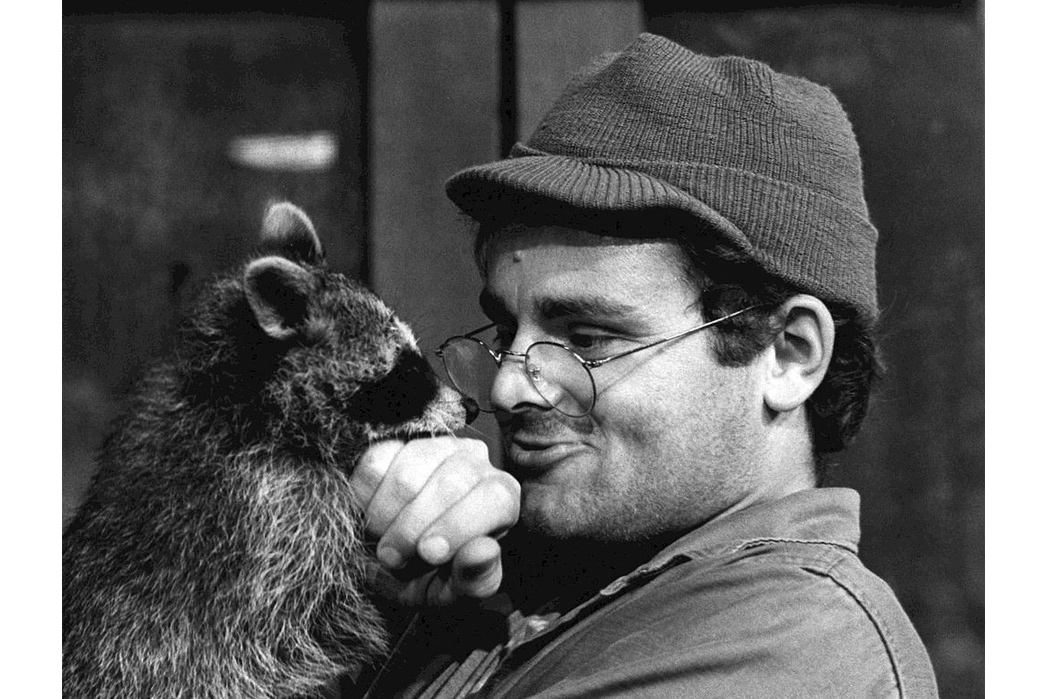- Heddels
- Posts
- March 31 -Bucket Hats – From Ireland to Gilligan’s Island - Meermin
March 31 -Bucket Hats – From Ireland to Gilligan’s Island - Meermin
Together with
Bucket Hats – From Ireland to Gilligan’s Island
The simple bucket hat has come full circle from stuffy country wear to military issue to hip hop icon, and beyond.
James Smith

From Irish countryside walks to the wildest of raves and almost everywhere in between, the bucket hat is an accessory that has sat upon the heads of people from all walks of life for over one hundred years. Whether its form or function, there is no questioning the lasting appeal of the bucket hat and its presence in popular culture.
But just how did the bucket hat make the leap from a functional rambling lid to street fashion and couture?
What is a Bucket Hat?

Soundman Bucket Hat via Clutch Cafe.
A bucket hat is a piece of headwear with a full, downward-sloping brim, typically made from cotton. The crown of a bucket hat can vary in shape, size, and structure and often features functional ventilation holes. Some wearers like to bend or fold the brim upwards to change the aesthetic of the bucket hat. This is dictated by the rigidity of the brim which can vary with different styles.
/ In Partnership with Meermin /
Hike in Style with Meermin's 516690 Boot in Tobacco Waxy Calf
Whether you're a seasoned hiker or just looking to channel the aesthetic, the Meermin 516690 Boot in Tobacco Waxy Calf will get you out the door looking slick and ready to ramble.
Meermin's Hiking boot is built on the brand's ONYX last which was designed specifically for this style to provide comfort and a wider toe box. This contemporary Hiking number turns things up a notch with Waxy Calf Leather and Goodyear welt construction that allows the boots to be re-crafted if you ever manage to wear down that lugged rubber sole. Further quality-of-life features can be found in the padded ankle and extended bellows tongue, the latter of which is made from a soft and supple waxed Kudu leather.
Head over to Meermin to grab a pair for just $280.
Beginnings of the Bucket Hat
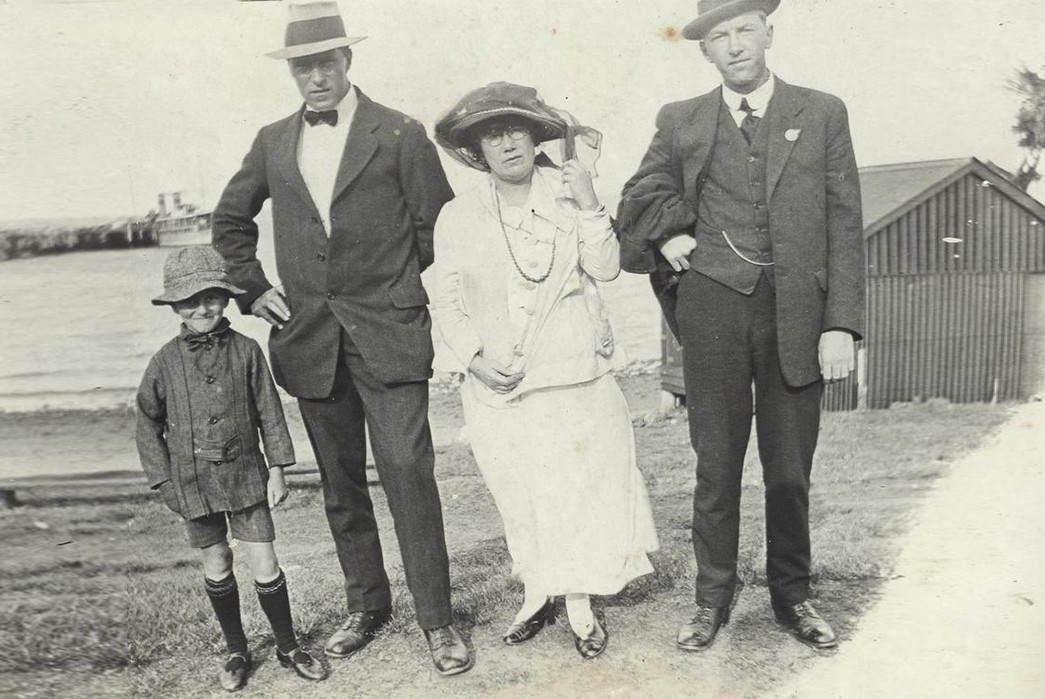
An Australian child wearing a tweed bucket hat in 1917. Image via State Library of Queensland.
The first bucket hat first appeared in early twentieth-century Ireland as a functional piece of headwear for outdoorsmen. Originally constructed from durable wool or tweed cloth, Irish farmers and fishermen favored the bucket hat because of the high lanolin content in the wool which made them water-resistant. Countrymen and ramblers soon embraced the bucket hat—then known by many as the “Irish country hat” — because in addition to its water-resistant properties, it was easy to wash and store in a jacket pocket.

Vintage Irish Tweed Walking Hat via Waterhollow Tweed.
Bucket Hats in the Military
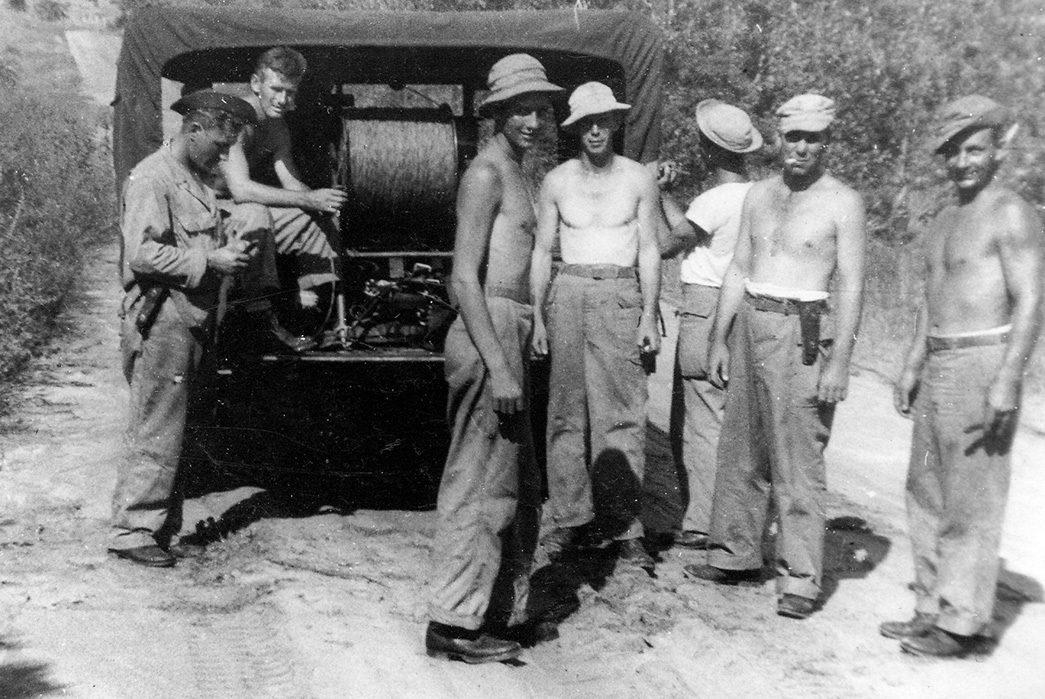
American soldiers wear HBT 1941 “Daisy Mae” hats while laying cable lines in 1943. Image via Eagle Clan.
The practical and durable qualities of the bucket hat led the U.S. military to introduce them during World War II to shield troops’ heads and eyes from the sun, preventing heat-related illnesses and glare while aiming firearms.
Denim and navy twill variants were issued the the U.S. Navy. Dubbed the “Daisy Mae”, these bucket hats featured a regular-size crown with an extended brim for heightened functionality in monsoon season. The forties also saw the Israeli armed forces utilize a soft crowned hat with wide brim similar to the Daisy Mae.
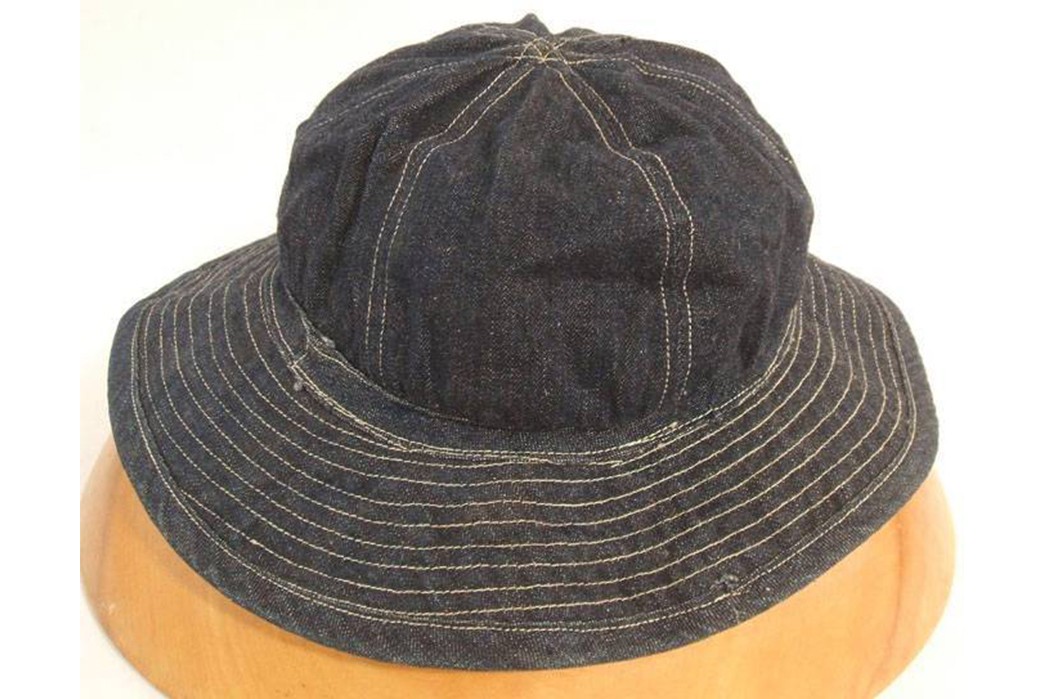
A vintage denim Daisy Mae from WWII. Image via Pinterest.
The bucket hat received a slight makeover in the sixties, leading the U.S. military to introduce the “Boonie Hat” during the Vietnam War. Also known as a “Giggle Hat”, the boonie was Initially issued to the Green Berets special forces, but it was soon adopted by other units and even soldiers of the Army of the Republic of Vietnam.

Daisy Mae in action along with other U.S. Military Denim Working Uniform Goodness. Image via May Club.
The Boonie is highly similar to the bucket hat, with the main differences being a flatter crown, stiffer brim, and the inclusion of extra features such as loops of fabric “branch loops” around the crown which were designed to hold leaves and shrubbery that could serve as camouflage. Troops would often salvage old camouflage and sew it onto their boonie hats.
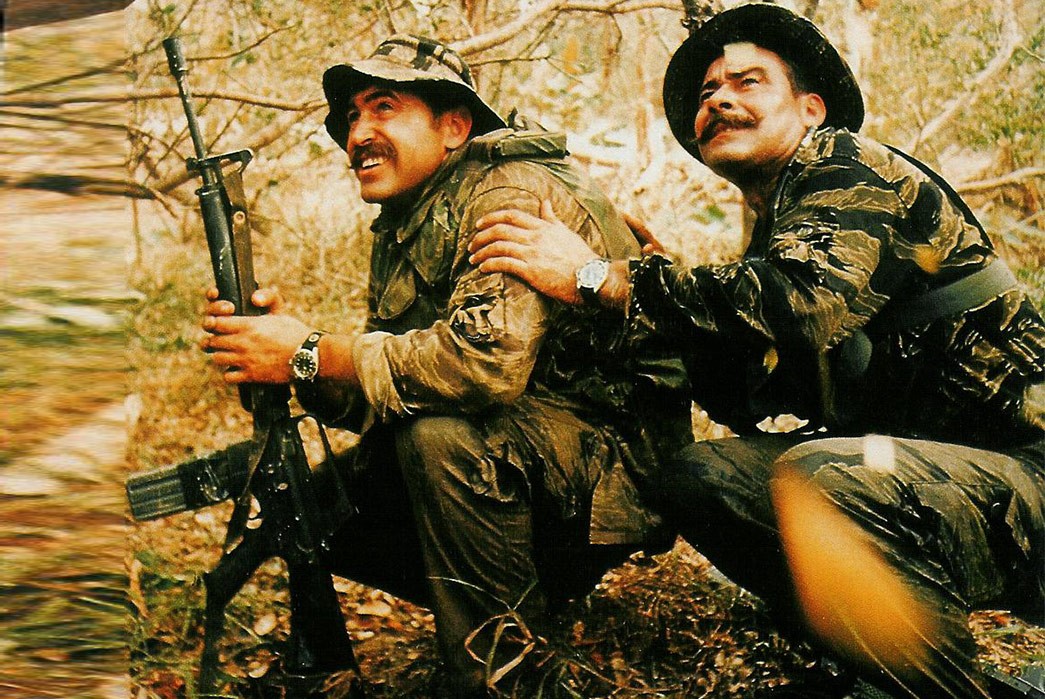
American special forces wearing boonie hats in Vietnam. Image via Masta.
By 1967, the U.S. army was issuing boonie hats as a standard. These hats were constructed from a wind-resistant cotton poplin, complete with a concealed mosquito net. These boonies typically came in generic olive drab or camouflage prints such as tiger stripe.
Fashion and Popular Culture
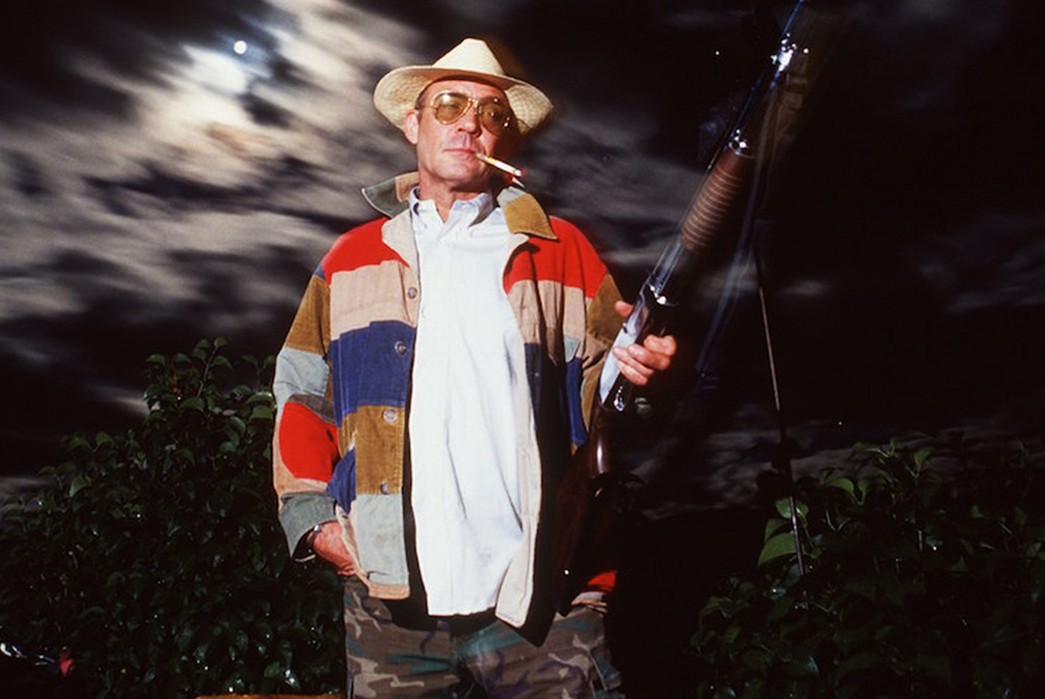
Gonzo journalist Hunter S. Thompson. Image via Konbini.
Just like so many classic garments and accessories, the military use of the bucket hat saw this piece of utilitarian headwear influence the world of fashion. By the mid-sixties, bucket hats had been embraced by civilians and celebrities alike. Bob Denver’s character in the mid-sixties sitcom “Gilligan’s Island” famously sported a khaki bucket hat throughout the series, and the esteemed American journalist and author, Hunter S. Thompson became known for regularly rocking a white cotton bucket hat.

Bob Denver in Gilligan’s Island via Remind Magazine
The sixties also saw ladies of the Mod subculture wear adaptations of the bucket hat that featured much longer brims, and elongated crowns to house their bouffant hairstyles.
The eighties and nineties saw the bucket hat gain popularity through the cultural movements of hip hop in the United States, and raving in the United Kingdom. By this point, many sportswear labels produced bucket hats, and famous rappers such as Sugar Hill Gang’s Big Hank, LL Cool J, and Run DMC championed buckets by labels such as Adidas and Kangol. This urban connection resonated with the ever-growing rave scene in England, leading bucket hats to become almost synonymous with the Rave, Drum N Bass, and Jungle movements.
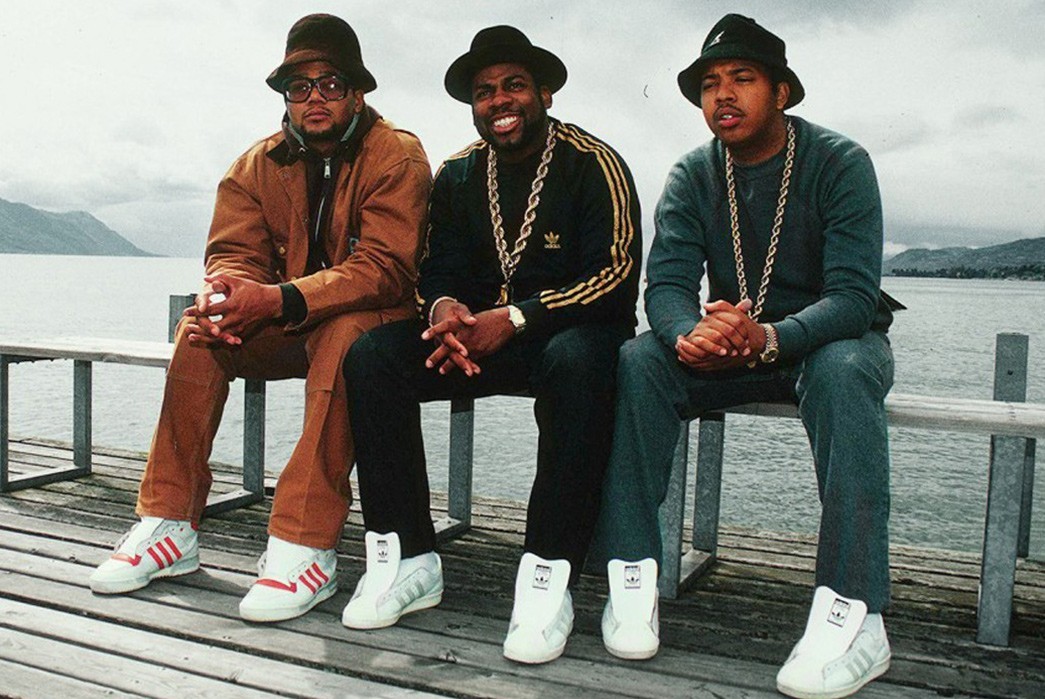
Run-D.M.C. on the set of their music video “My Adidas” in 1986. Image via Def Jam.

Liam Gallagher in a bucket hat via Wall Street Journal.
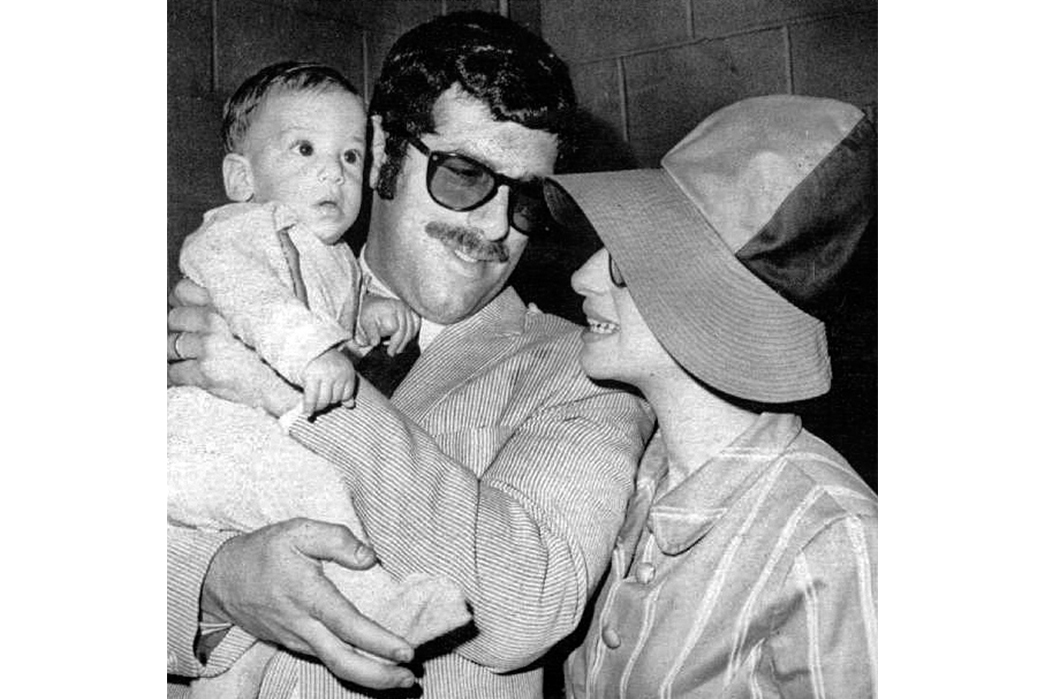
Barbara Streisand with Eliott Gould wearing a bucket hat in 1967. Image via eBay.
Bucket Hats Today

Daisy Mae Bucket Hat styling via Bronson Mfg. Co.
Bucket hats are still widely produced today and boonie hats are still issued and worn by armed forces across the globe. In terms of fashion, bucket hats have gained more and more popularity in recent years in line with the revival of eighties and nineties sportswear and the ver-growing interest in military styles.
They have a strong presence in rap and streetwear culture, with brands such as Stussy, Supreme, and W)Taps producing bucket hats and boonies in many of their spring/summer collections. Japanese label OrSlow has produced a reproduction of the forties military Daisy Mae bucket hats in a variety of fabrics.
While you can pick up a bucket hat from almost any clothing retailer, here our some of our picks for mindfully crafted, top-quality bucket hats, each with a point of difference.
Kiriko Made reversible Bucket Hat in Deim & Sashi-Ori, available for $85 from Kiriko Made.
Soundman Bucket Hat Indigo, available for $110 from Clutch Cafe.
orSlow Daisy Mae Hat, available in Denim, HBT, and Hickory Stripe from DeeCee Style for $173.
Blluemade Linen Bucket Hat, available for $99 from Blluemade.
Like this? Read these:
What did you think of today's newsletter? |








